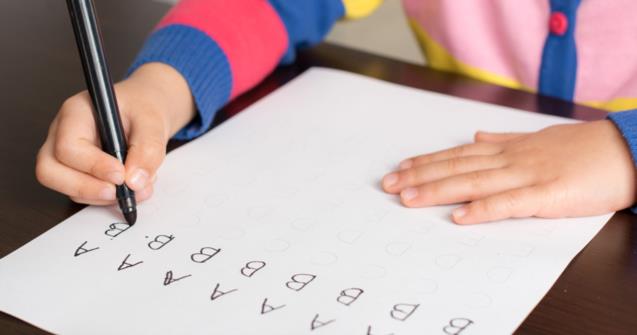
Reading and writing foundation skills to develop before kindergarten
Long before children attend school, there is a lot of work that is done... During early childhood, a lot of effort is put into building motor skills, social skills, and different tools that will guarantee children start kindergarten as "well-equipped" as possible. Reading and writing foundation skills are among the most important tools. Although children will continue to build them in kindergarten, language and literacy-related play are highly recommended during the preschool years.
At this age, the goal is simply to help children realize that reading and writing are present in their environment. They can be expected to recognize different logos they see regularly, know that text is read from left to right, understand an illustration, know how to use books, and recognize certain numbers and letters. Our intention is not to teach children to read and write, but simply to raise their awareness that reading and writing exist.
In terms of building reading and writing foundation skills, you probably already do a lot more than you think. If you read to your group daily, you are inevitably on the right track. Reading and writing awareness is made possible through different activities. Forget pencils and paper as well as static work positions; children will be required to sit enough once they begin school. Preschool years are made for active play, having fun, and discovering the written world.
Books
Have fun reading different types of stories. Fill plastic bins with books and let children explore the contents of the bins freely. When you read to your group:
- Take the time to follow the words with your finger to help children understand that reading is done from left to right.
- Ask children questions about the story to help them develop their memory, their comprehension skills, and their storytelling skills.
- Encourage children to anticipate the outcome of a story by asking them what they think will happen on the next page.
- Study the book's cover page, discuss its title. Ask children to guess what the story is about.
Tracing basic shapes
The ability to trace the following basic shapes is important: circle, horizontal line, vertical line, cross, X, oblique line. They represent the starting point for learning to trace letters. Although children will only begin writing actual letters in school, you can have fun with the following activities.
- Have them trace basic shapes in a sandbox, a rice bin, or a flour-filled tray.
- Let them use dry-erase boards or chalkboards.
- Integrate basic shapes in as many crafts as possible (circles in a tree, X's to represent birds in a sky, etc.).
- Have them trace basic shapes in the air using arm movements, tree branches, or rhythmic ribbons.
Put scissors to work
Scissor skills are also important for school readiness. Here are a few ways to help children develop important abilities.
- Have them cut strips of paper measuring just a few centimetres.
- Encourage them to cut circles, straight lines, squares.
- Provide shapes with wide contours to simplify cutting activities. Slowly refine the lines as children's cutting skills improve.
Playing with letters
Keep in mind that at this age, the goal is not for children to know how to write and recognize all the letters of the alphabet. Instead, aim to familiarize children with letters. Help them develop the ability to spot identical letters and begin to recognize certain letters.
- Invite them to find letters on posters, cereal boxes, in magazines.
- Write a word and invite children to trace its letters in a flour or sugar-filled tray or baking sheet.
- Show children a word and have them place magnetic letters in the correct order to reproduce it.
- Write each child's name on a piece of cardboard. Invite children to find their name and their friends' names.
When introducing preschoolers to reading and writing, the key word is "simple". Simply making it possible for children to discover how reading and writing are everywhere and giving them the opportunity to manipulate books and crayons as well as play with letters and numbers can make a big difference in terms of building foundation skills.
Have fun!
Maude Dubé
Specialized educator

 Home
Home Theme activities
Theme activities
 Babies and toddlers
Babies and toddlers
 Arts and crafts
Arts and crafts
 Science
Science
 Creative recipes
Creative recipes
 Tips and tricks
Tips and tricks
 Special needs
Special needs
 Extra activities
Extra activities
 Educ-TV
Educ-TV
 Newsletter
Newsletter  Online store
Online store Educatall club
Educatall club

